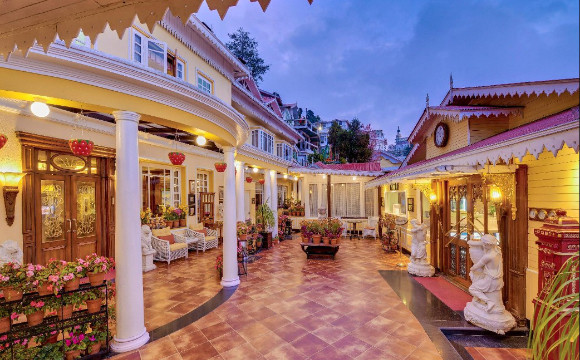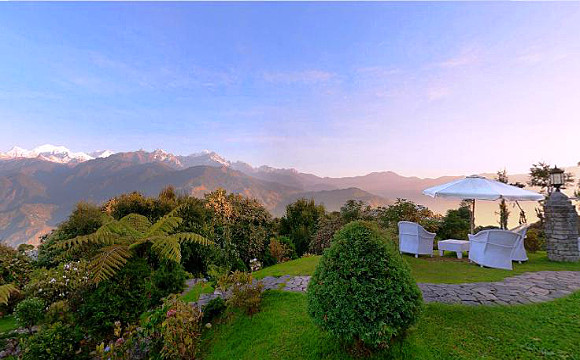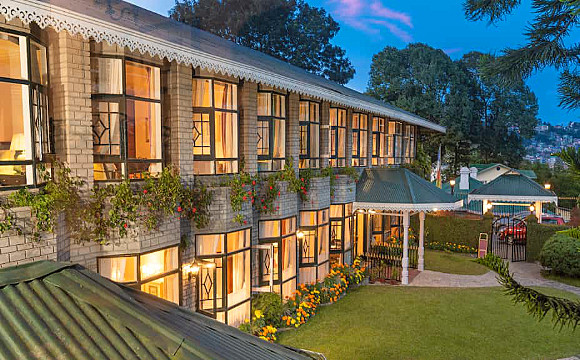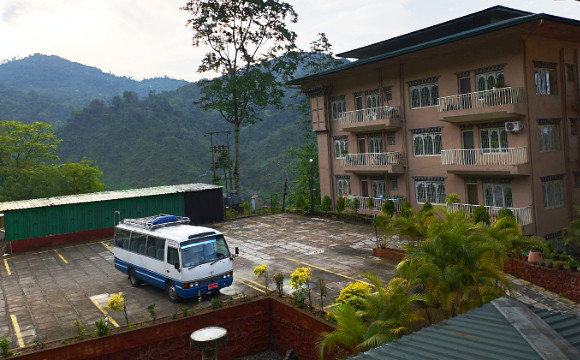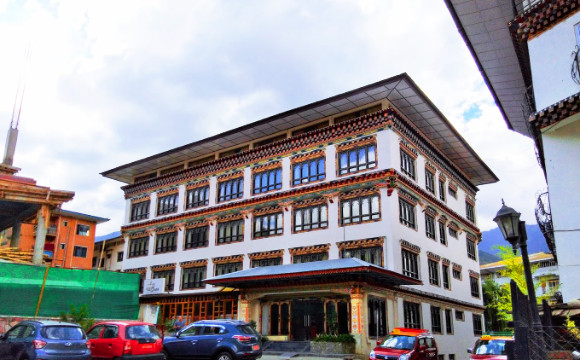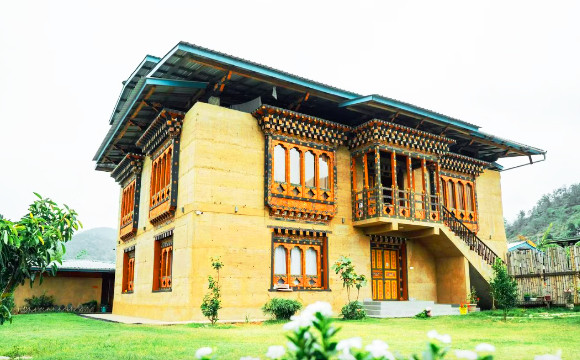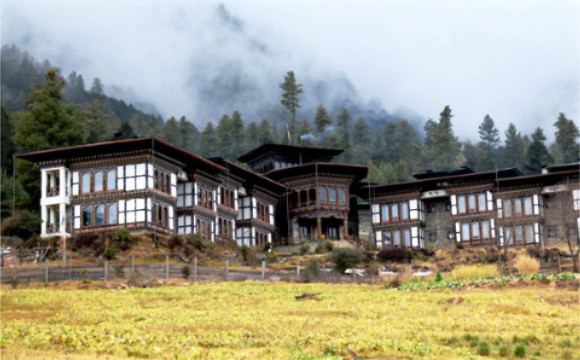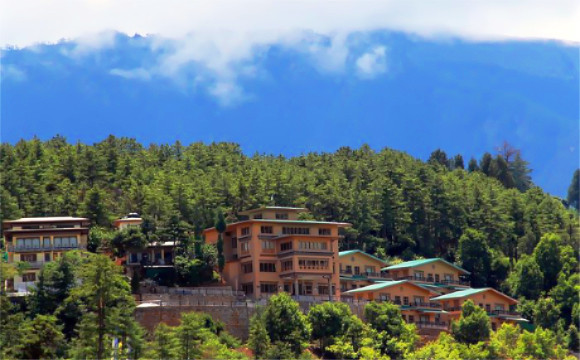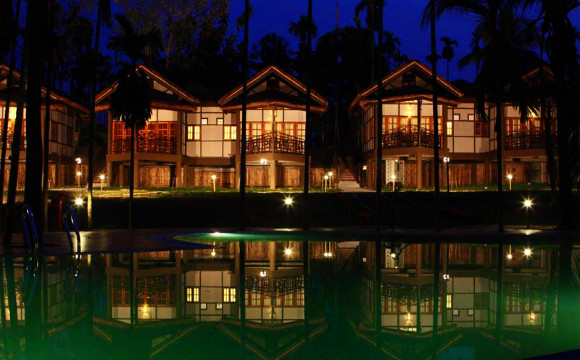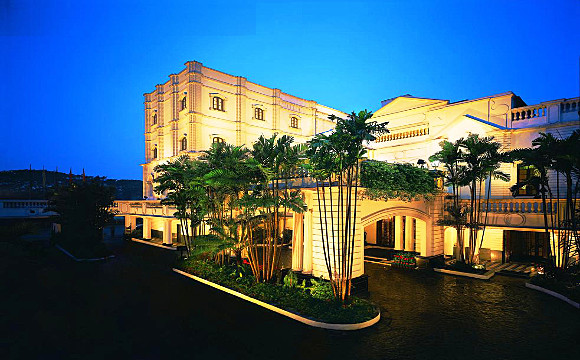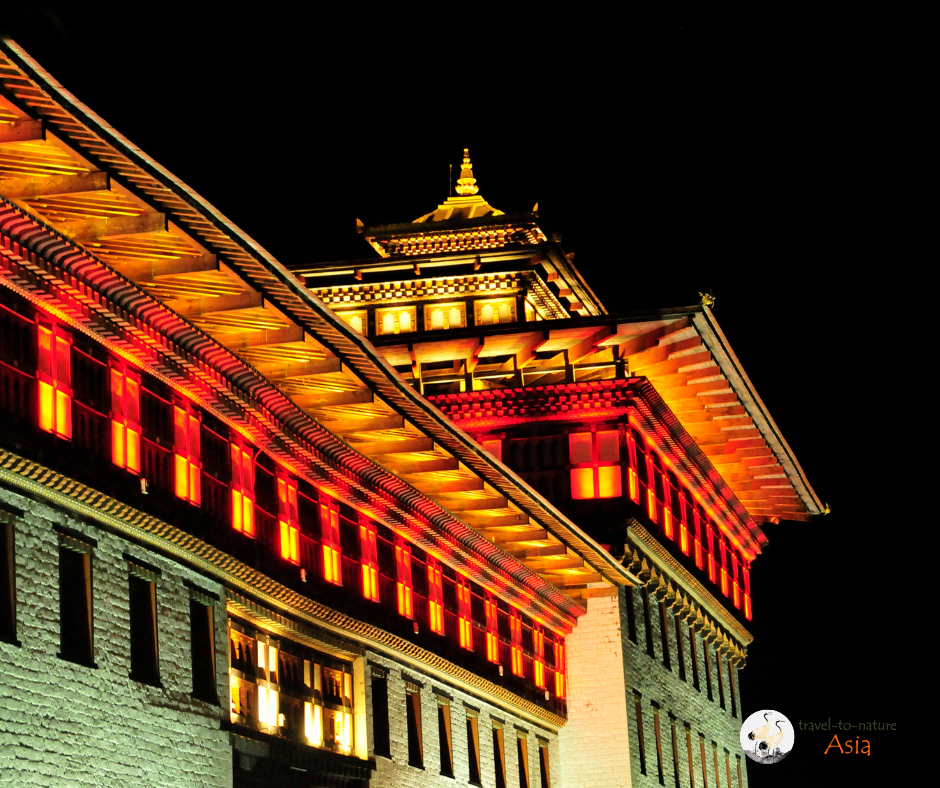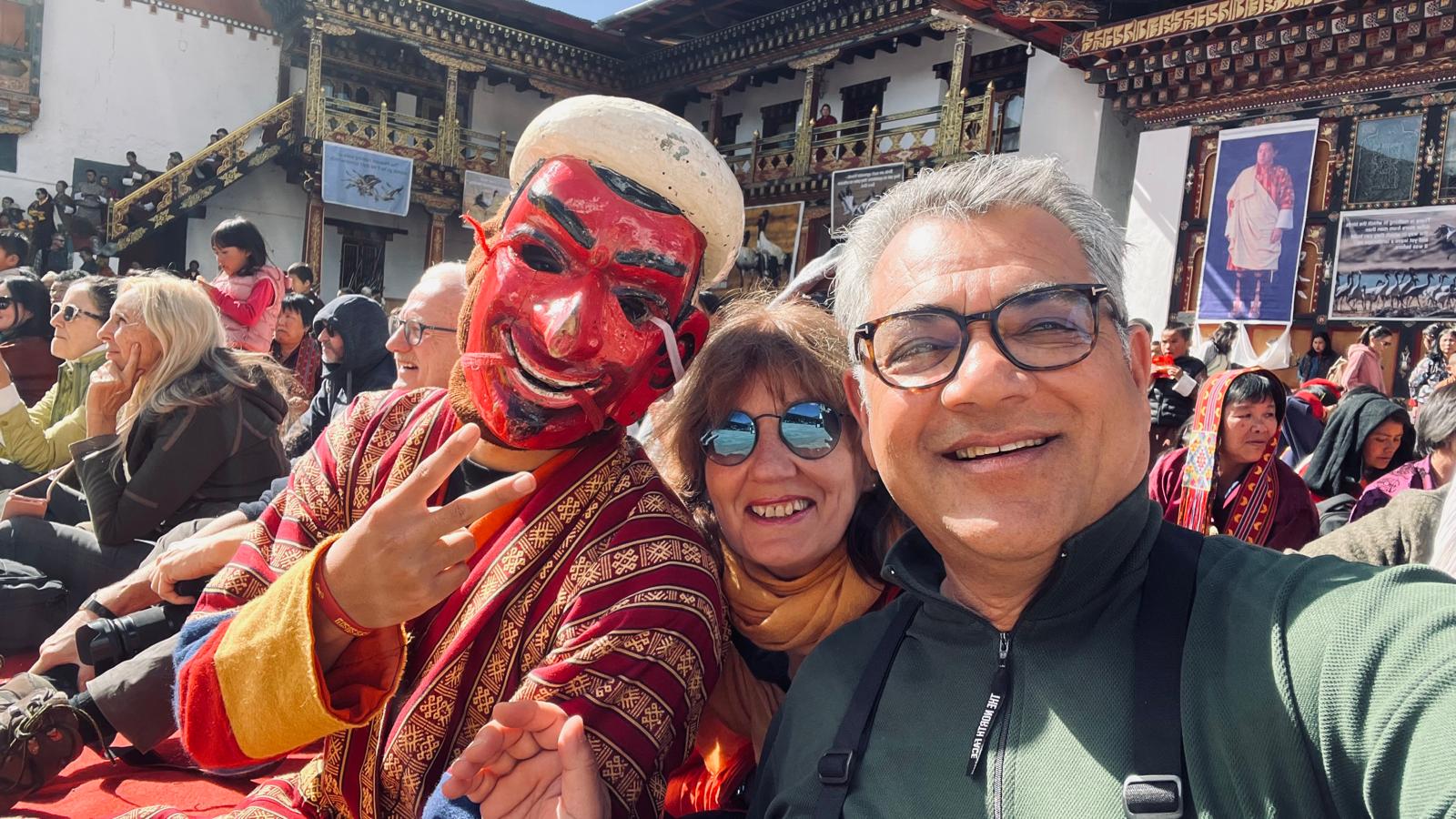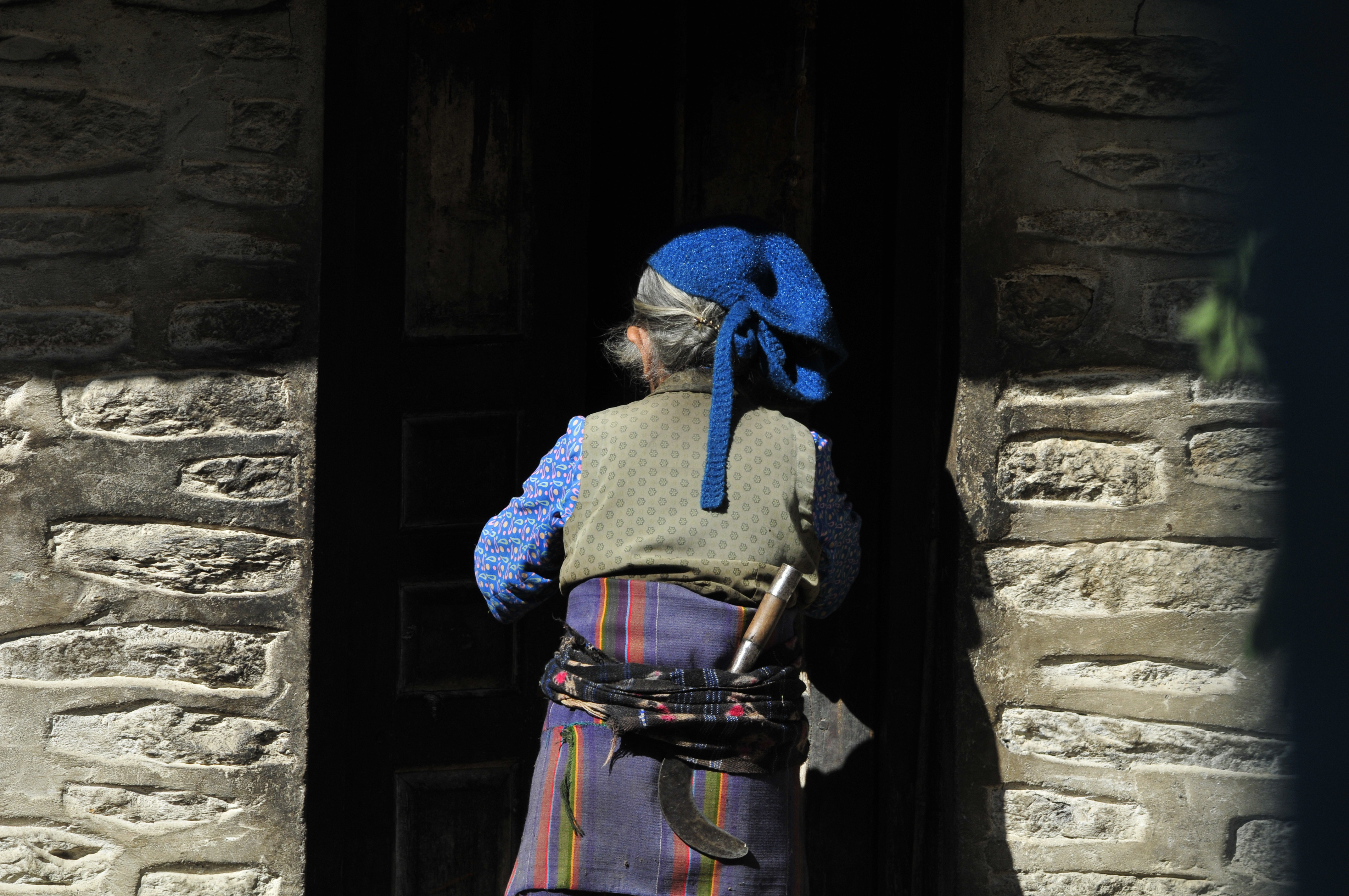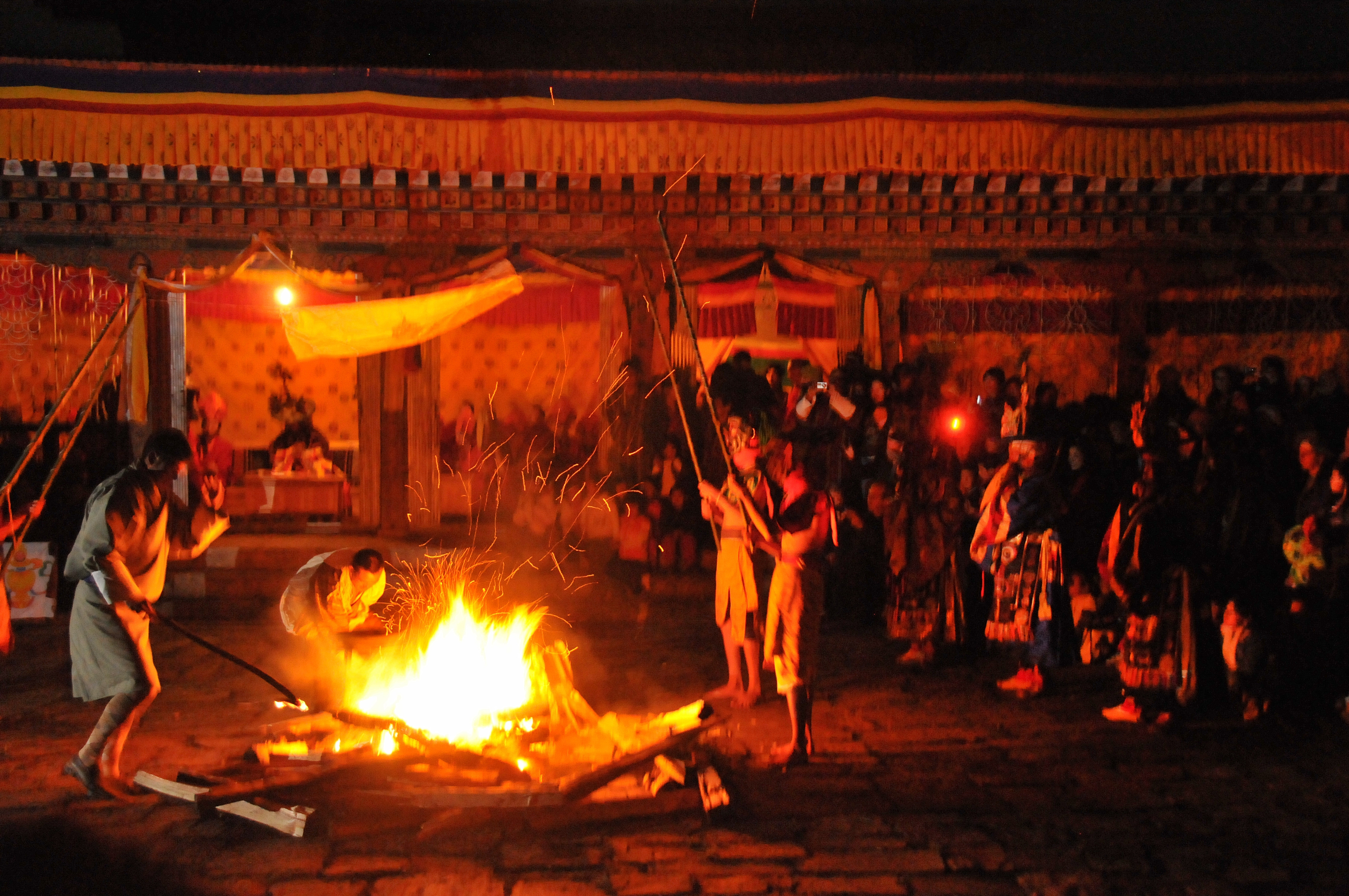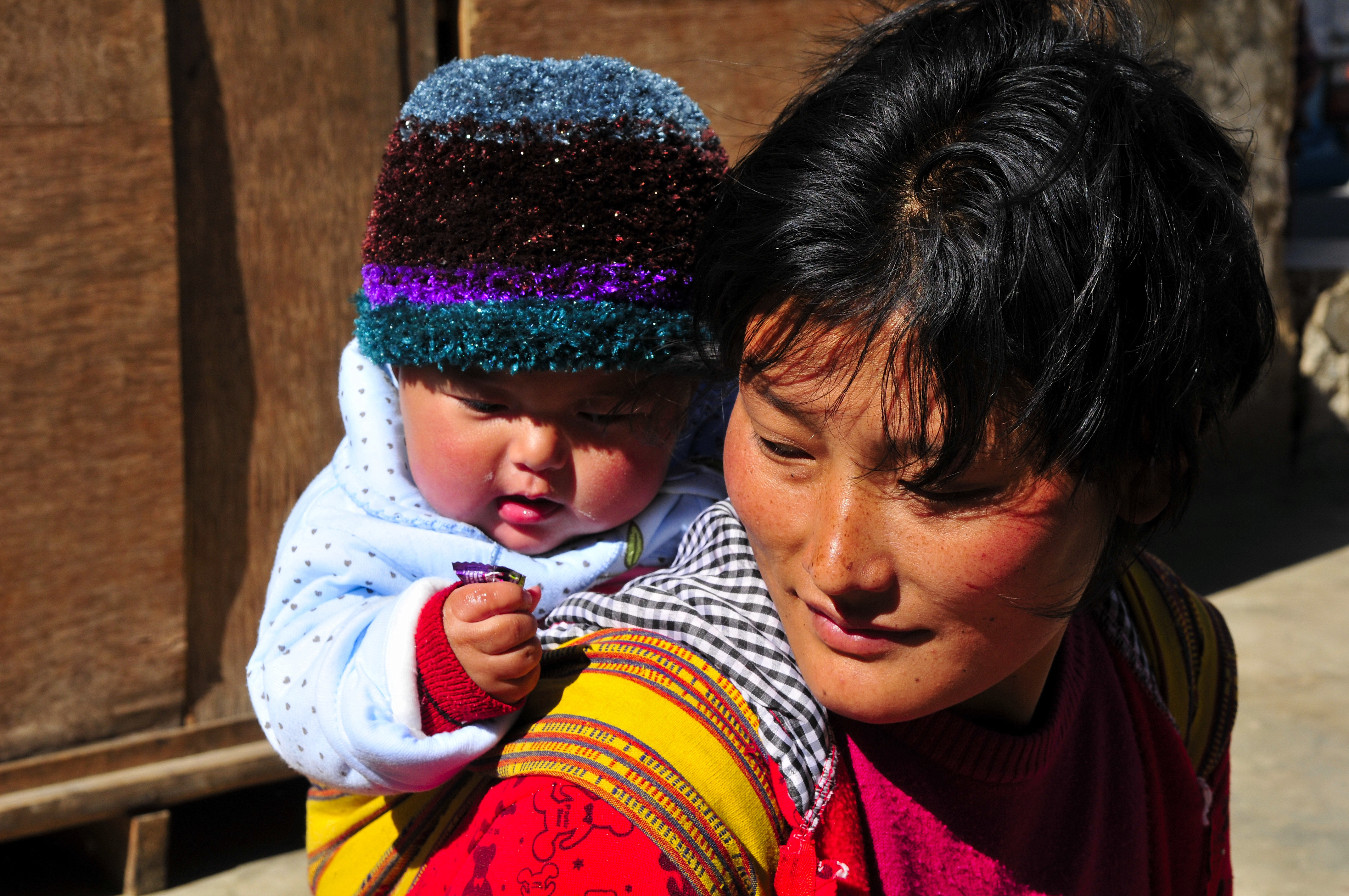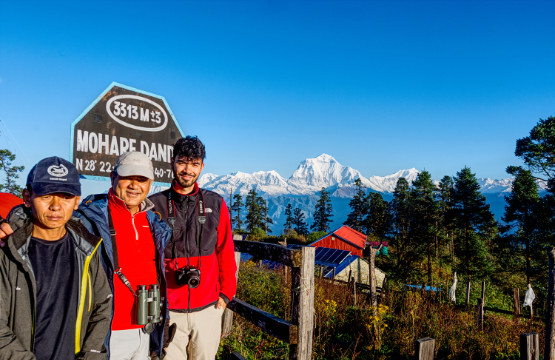Bhutan with Darjeeling, Sikkim, and Kazirang NP
Highlight
Trip Facts
Start & End Point
Delhi/Kolkota
Duration
20D/19N
Best Time
Spring/Autumn
Grade
Easy to Moderate
Activity
Wildlife & Cultural Discovery
Accomodation
3-5* Hotel
Meals
18 Breakfasts, 11 Lunches, 18 Dinners
Max. Elevation
Itinerary
Upon arrival in Delhi, clear customs and immigration. Meet our representative and driver outside the terminal building and transfer to Domestic Terminal to catch your connecting flight to Bagdogra. In good weather condition one can enjoy the view of Mt. Everest and Mt. Kanchanjunga.
Your Guide & Driver will receive you at Bagdogra airport & drive to Darjeeling in the state of West Bengal, north-east India. The drive is approx. 85 Kms & takes about 3 hours. Upon arrival in Darjeeling, check in at your hotel. Rest of the day at leisure.
Set at 2,045 m, Darjeeling is a bit off the beaten path, but worth the effort to visit. This pretty resort built among tea plantations is one of the cool hill stations, where the rulers of the British Raj could escape the heat of the summer. The places now attracts tourist around the world (primarily upper-class Indians) bent on the same advantages of natural air-conditioning. Half of the fun of visiting Darjeeling is getting there. The famous 'toy train' huffs & puffs and climb to more than 2400 m along a narrow-gauge track before reaching the city (you might remember the train from the movie Around the the World in 80 Days). The trip begins in Siliguri and takes about eight hours to climb 80 km. Nevertheless, it is well known for the world famous Darjeeling Tea.

Accommodation
Mayfair Hill Resort
Meals
Breakfast | Dinner
Maximum Altitude
2,042 mWith a backdrop of mighty snow-clad Himalayan peaks, Darjeeling is the most important hill resort in eastern India. The mighty Kanchenjunga peak overlooks the town and, with luck, we will also see the world’s highest peak, Mount Everest, from near the town. We will also be exploring Darjeeling on foot, enjoying the colonial style buildings of the British Raj and visiting some of the town’s attractive locations, such as Observatory Hill (known as ‘The Mall’) and the Himalayan Mountaineering Institute (HMI). The Mall is a hill near the main square in Darjeeling, Chowrasta. There are wonderful views of the Himalayas from The Mall. Situated at an elevation of 2,100 meters, the HMI was founded in 1954 after the historic conquest of Everest on the 29th May 1953 by Tenzing Norgay (a Sherpa) from Darjeeling and Sir Edmund Hillary, from New Zealand.
Darjeeling Himalayan Railway or the ‘Toy Train’- The Toy Train is one of the most famous narrow gauge trains in the world. Highlights of a trip on this train include the Batasia Loop with its spectacular views down into Darjeeling and of the surrounding high peaks, Tiger Hill – the highest station on the line and a UNESCO World Heritage Site, the Gurkha War Memorial and the Himalayan Mountaineering Institute.
Narrow gauge steam engine trains still operate with their original steam engines and the loops and the zigzags along the route are remarkable feats of engineering. We will take a short ride from Darjeeling town to Ghoom, the nearest station. It is a joy ride in itself. The Toy Train is considered an engineering marvel and railway enthusiasts regard it as one of the wonders of the world, worth preserving forever.
Darjeeling Zoo: This is a 67.56 acre (27.3 ha) zoo in the town of Darjeeling. The zoo was opened in 1958, and an average elevation of 2,134 m, is the largest high altitude zoo in India. It specializes in breeding animals adapted to alpine conditions, and has successful captive breeding programs for the snow leopard, the critically endangered Himalayan wolf and the red panda.
Himalayan Mountaineering Institute: This was founded in 1954 after the historic conquest of Everest on the 29th May 1953, when two people reached its summit. They were the Sherpa Tenzing Norgay, from Darjeeling and Sir Edmund Hillary, from New Zealand. As an honor to the great Sherpa this institute was formed with the aim of imparting mountaineering skills to enthusiasts. Tenzing Norgay was one of the founding members of HMI and also served as field director of the Institute. HMI also houses a museum which holds a rare collection of mementoes from various Everest expeditions.

Accommodation
Mayfair Hill Resort
Meals
Breakfast, Dinner
Maximum Altitude
2,045 mToday we leave Darjeeling and proceed to Pelling where we will settle into the resort "The Elgin Mount Pandim". It offers a unique and personal tryst with the Himalayas and revokes the old world charm created by its first owners - the royal family of Sikkim and offers a peaceful retreat. Pelling is about 73 km away from Darjeeling and 115 km from Gangtok, the capital of Sikkim.
The placid town pulls most of the visitors for its representative status in history, nature and culture of the state of Sikkim. More precisely Pelling is famous for magnificent views of the snow-capped Kanchenjunga (8,586 m) range, the third highest peak in the world.
For bird lovers the resort offers an excellent vantage point for watching rare birds including the Green-tailed sunbirds, Rufous-gorgeted Flycatchers, Scimiter Babblers and Laughing thrushes and many more.

Accommodation
The Elgin Mount Pandim
Meals
Breakfast, Dinner
Maximum Altitude
Sun, cloud or fog? This is the key question in the morning when we wake up directly in front of the 8,686m third-highest mountain in the world, Kanchenchunga. Situated at an altitude of 2150 m, Pelling offers breathtaking view of the entire Kanchenjunga mountain range including Koktang, Kumbhakaran (Jannu), Rathong, Kabru, Kabru Dome, Kanchenjunga, Pandim, Siniolchu and others. This is as close as you can get to the Kanchenjunga range without leaving the material comfort of good hotels. There is a great deal to interest visitors here.
We will spend our two full days here exploring by jeep and hiking around. We will take time to explore the town, meet the local people and get an insider's perspective on the local culture. We will visit many places of interest that fit the best to all of us.
Pemayangtse Monastery: Pemayangtse literally means 'Perfect Sublime Lotus'. This is one of the oldest and most important monasteries of Sikkim. Founded in 1705, this monastery belongs to the Nyingma-pa sect. The three-storied building of the monastery houses a good collection of wall paintings and sculptures. On the third floor of the monastery, there is a seven-tiered painted wooden model of the abode of Guru Rimpoche, complete with rainbows, angels and the whole panoply of Buddha and
bodhisattva. In January/ February every year, a religious dance called 'Cham' is performed in Pemayangtse. Sanga Choeling Monastery is located on the top of the mountain behind the town of Pelling. The distance to the monastery from town is about 3 km. The road is not motorable and one needs to take a 45 minute walk through a quite path to reach the monastery. As a result a visit to Sanga Choeling Monastery is not part of any of the regular itinerary. But if you have time and energy, the effort of the uphill walk is well rewarded with great views of Pelling and surrounding hills including great views of Mount Kanchenjunga that can be seen from the monastery compound.
Built in 1697 the Sanga Choeling is one of the oldest monasteries in Sikkim. Sanga Choeling means 'the island of esoteric teaching'. This Gompa is another of Lhatsun Chenpo's creations, and is highly venerated among the Nyingmapa. Gutted by fire, it has been rebuilt and houses some of the original clay statues.This monastery is the second oldest in Sikkim. Since the place can only be reached on foot, even during high tourist season, the monastery is not crowded. One can still enjoy the great views among tranquillity.
Khecheopalri Lake: Khecheopalri Lake is considered one of the most sacred lakes of Sikkim. The lake remains hidden under rich forest cover. It is believed that birds do not permit even a single leaf to float on the lake surface. Our visit to Pelling would be incomplete without a tour to this lake.
Rabdentse Ruins: This was the second capital of the erstwhile kingdom of Sikkim after Yuksom and till the year 1814 A.D., the king of Sikkim ruled the state from this place. Today, Rabdentse ruins lie hidden from the main road at a walking distance from Pelling and the Pemayangtse monastery. It can be approached by following a footpath which branches off the main road. The scenic view from the top of the ruin scanning across deep valley to the mystic heights of Kangchenjunga ranges is something to be cherished and etched in memory.

Accommodation
The Elgin Mount Pandim
Meals
Breakfast, Dinner
Maximum Altitude
1,800 mGetting up early is rewarded by a beautiful sunrise, as if the Himalayas opening its unique light theater. Around the Hills sky and earth suddenly seem to melt. Glowing, the sun awakens the mountain gods of the highest Himalayan summits. After our leisurely breakfast we are set for a beautiful and scenic journey to Kalimpong (1,250 m) for overnight stay at The Elgin Silver Oaks, Kalimpong. The Elgin Silver Oaks Kalimpong, was the
home of a famous Jute magnate. It is now converted into a luxury Elgin boutique hotel in the Himalayas. Rest of the day is free for individual activities.

Accommodation
The Elgin Silver Oaks
Meals
Breakfast, Dinner
Maximum Altitude
1,250 mThe drive through the plains of West Bengal will be a different experience. The slow experience to the travellers. Phuentsholing, as a frontier town, provides a entry/exit point for Bhutanese and foreign visitors. At an elevation of around 293 m above sea level, it is one of the commercial hubs in Bhutan and quite close to the Indian town Jaigaon.
On arrival at Phuentsholing, you will be received by your Bhutanese guide and driver and escorted to hotel for check-in. In the evening, if time permits stroll around the town.

Accommodation
Hotel
Meals
Breakfast, Lunch, Dinner
Maximum Altitude
After breakfast process visa formalities and proceed to Thimphu. The road further climbs steeply and winds in innumerable bends, upwards to an altitude of approx. 2,300m. Five kms ahead of Phuntsholing, visit Kharbandi Gompa built in a garden of tropical plants and flowers. From the monastery garden, there is a beautiful view over the plains and the town of Phuntsholing. After two hours drive through mountain jungle, displaying lianas and orchids, the first ridge has been passed and the road descends slightly. The scenery and vegetation changes and en route you pass Chukha Hydel Project and the small town of Chimakothi. Near Chapcha the road reaches its highest point approx. 2,800m and from here it goes steeply down and along the Wang Chu (river) till the Chuzom (confluence). From Chuzom, the road passes via scattered villages set in the midst of apple orchards to Thimphu. On arrival in Thimphu, check into your hotel.
Thimphu Thimpu, the capital of Bhutan is situated on west bank of the river Thimphu, (Thimphu Chhu) in a wooded valley at an elevation of 2,320m. Prior to 1961, Thimpu was only an insignificant village. The massive Tashicho Dzong, about 700 years old, was carefully revamped in the 1960s by the late King Jigme Dorji Wangchuk to house the royal and main government offices. Since the country emerged from isolation its importance has grown and it has many official buildings. The Secretariat, King's offices and some ministries are housed in the Tashichho Dzong, next to which one of the world's highest golf courses (9 hole) has been made. With a population of no more than 130,000. Even today, it still has a few streets and no traffic lights. Thimphu is an easy place to wander around, and will enable the visitor to appreciate the detail of Bhutanese architecture.
A few miles south of the capital is Simtokha, one of the oldest complete Dzongs in the country, dating from the
early 1600’s, a period when Shabdrungs, the line of religious rulers originally from Tibet, ruled the country.

Accommodation
Hotel
Meals
Breakfast, Lunch, Dinner
Maximum Altitude
2,350 mToday, we will visit some of the well-known landmarks in the city. In the city centre, you will find the traffic policeman directing the traffic flow instead of traffic signals. It is said that Thimphu is the only capital in the world without traffic signals.
Across the town the Zorig Chusum Institute, which literally translates as the thirteen (chusum) arts and crafts (zorig) of Bhutan. We will meet the talented artists and students at work. Just a short walk away is the National Institute for Traditional Medicine. The Institute produces indigenous medical products from herbs, minerals, gemstones and animal products. Some of the herbs are rare plants collected high in the Himalayas. Drive past the only public golf course in the country, on our way to the Trashichho Dzong – the 17th Century Dzong houses the offices of the Central Government and the Monastic Body and also the Throne Room of His Majesty. If time permits we will also visit otherplaces of interest .
Memorial Chorten: This landmark of Thimphu was built in 1974 in the memory of third King, Jigme Dorji Wangchuk, who is popularly regarded as Father of Modern Bhutan. It is a four-storey tall white building, containing statues and iconography of deities from complex tantric teachings and serves as an important place of worship for Thimphu residents, as well as from other parts of the country.
Takin Sanctuary: Takin (Budorcas taxicolor) has been chosen as the national animal of Bhutan is based both on its uniqueness and its association with country’s history and mythology. It is said that Devine Madman, a popular saint is said to have created it with his magical power at a large congregation of devotees. It resembles like a cow from back and goat in the front and continues to befuddle taxonomists, who cannot quite relate to other animal.
Buddha Point: This is a new monument and main highlight of Thimphu valley. It has 165 meter high Buddha Statue
Paper Factory: Traditional papers were made from the daphne plant, using simple methods.
Weekend Market: The colorful weekend market of Thimphu is held from Friday-Sunday. Residents of Thimphu and country sides come to shop for food and clothes. There are some handicrafts and gifts shop as well, and provide a great photography scene.

Accommodation
Hotel
Meals
Breakfast, Lunch, Dinner
Maximum Altitude
2,248 mThe drive from Thimphu takes about 3 hours. The road climbs from Thimphu to Dochula pass and descends through ever changing forests into the semi-tropical valley of Punakha and Wangdi at around 1200m. En-route stop at Dochula pass (3050m) where you can view the eastern Himalayas, including Bhutan's highest mountain, Gangkar Punsum (7,550m). In the afternoon, we will visit historical Punakha Dzong.
Punakha was the old capital of Bhutan and the dzong was the second one to be built in Bhutan. This remarkable fortress position at the confluence of the Mo and Pho Chhu is quite spectacular and it has survived many fires, an earthquake and a glacial flood. Over the years it has been repaired and added to and has several interesting features to protect it against invasion. In April the front of this majestic building is highlighted by the blossoming of the Jacaranda trees; their purple flowers softening the giant walls, encouraging your eye to the intricate hand-carved and painted windows. Punakha was the old capital of Bhutan and the dzong was the second one to be built in Bhutan. This remarkable fortress position at the confluence of the Mo and Pho Chhu is quite spectacular and it has survived many fires, an earthquake and a glacial flood. Over the years it has been repaired and added to and has several interesting features to protect it against invasion. In April the front of this majestic building is highlighted by the blossoming of the Jacaranda trees; their purple flowers softening the giant walls, encouraging your eye to the intricate hand-carved and painted windows.

Accommodation
Hotel
Meals
Breakfast | Lunch | Dinner
Maximum Altitude
1,200 mAfter breakfast, we take an easy hike to the Fertility Temple (Chimi Lhakhang) across the paddy field. Later drive to Phobjikha. Enroute stop briefly at old Wangdi to visit historical Wanduephodrang Dzong.
Fertility Temple (Chimi Lhakhang): a monastery and fertility temple dedicated to Lama Drukpa Kuenley, a Tibetan Buddhist saint known popularly as “the divine madman” and considered a folk hero in Bhutan for his unconventional ways. Drukpa Kuenley originally built a chorten on the site in the 14th century, on which a temple was later built in 15th century. The temple, flanked by nearly 100 tall prayer flags, sits atop a picturesque hill. It has long been a pilgrimage site for childless couples. This easy walk takes about 20 minutes each way. Drive from Punakha to Phobjikha: Drive to Phobjikha takes about 2 hours covering distance of 60 km. The road climbs from Wandue, drive uphill almost reaches Pele La pass 3400m. Before, reaching the pass, the road diverges and we take the road least traveled by. This eventually leads into the 'hidden valley' containing the stunningly beautiful monastery of Gangtey Gompa.
Phobjikha (3000m) is a wide-glacial and beautiful valley, designated as conservation zone within the Black Mountains National Park, a natural habitat for wildlife, including nesting black-necked cranes from Central Asia (mid autumn till early spring). Because of the conservation measures, there is no electricity in the valley. The lodges use solar powered cells or generator to light which is turned off after dinner. Hot water is provided in the bucket and rooms are heated with wood stoves.
Upon arrival in Phobjikha we will check-in our hotel. Rest of the day we will explore the important sites within the valley.

Accommodation
Hotel
Meals
Breakfast, Lunch, Dinner
Maximum Altitude
Phobjikha is one of the most beautiful place in Bhutan and designated as conservation zone. This valley is also considered sacred due to the presence of endangered Black Necked Crane in the winter season.
We will Spend our day visting Gangtey Gonpa witnessing the Blacked-Naked Crane Festival and explore the flat beautiful valley and traditional village untouched by modernity.
The Annual Black-necked Crane Festival is a one-day event celebrated at Gangtey Gonpa, Phobjikha valley on 11th November. Phobjikha valley is the largest winter habitat of Black-necked Cranes in Bhutan. The Black-necked Crane Festival is organized by the Environment Management Committee composed of several local stakeholders. During the winter months, the Black-necked Cranes become part of the local people’s daily lives. The festival is an occasion for the locals to rejoice and celebrate the arrival of Black-necked Cranes, revered as the heavenly birds. The festival is organized to generate awareness, provide economic incentives for local communities and form an avenue for the locals to renew their commitment to conserve the cranes. It also offers communities an opportunity to showcase their cultural heritage and skills. The festival generally includes cultural programs such as folk songs, environment related songs and mask dances performed by the local people, school children and monks. The highlight of the festival is usually the locally choreographed crane dance performed by school children. The festival was initiated by Royal Society for Protection of Nature, a national NGO, as a part of Integrated Conservation and Development Program (ICDP). The first festival was held in November 1998 in the middle of the valley near the old school.
Gangtey Gompa: Gantey Gompa monastery sits atop a hillock that overlooks the Phobjikha valley. It is headed by the ninth Gangtey Trulku and is the largest Nyingma reincarnation of influential treasure finder Pema Lingpa. Incarnate line of Pema Thinlay, representing the body aspects of Pema Lingpa, contrasted with mind and speech emanations. The monastery has been recently built and surrounding the monastery are village homes and hermitages.
Endangered Black-Necked Crane Information Centre : The centre displays about the cranes and the valley environment. You can use the centre’s powerful spotting scopes and check what you see against its pamphlet ‘Field Guide to Crane Behaviour’. If the weather isn’t good, you can browse the library and handicraft shop, and watch videos of the endangered birds, its habit and habitat. This valley is also one of the pioneer centre ecotourism in the country.
Black-necked Crane: ‘Thrung Trung Karmo’ as this bird is passionately called in Bhutan is subject of many Bhutanese songs and folklore. They are seen among the painting on the walls of temples and Thankga. These endangered species of cranes migrate from Tibet in late autumn and typically stay till the mid march. About 3-400 cranes reside in the wetland in the center of the valley. The Observation & Education Centre has informative display about the cranes and conservation effort in the valley.
monastery in western Bhutan. It was founded in 1613 by Gyalse Pema Thinlay, a grandson and

Accommodation
Hotel
Meals
Breakfast, Lunch, Dinner
Maximum Altitude
Today, we try to leave early to Paro with stop at places of scenic beauty. The drive to Paro takes about 5 -6 hours covering distance of approx. 170 km. The road climbs again to Pele La pass (3400m) where we make stop for views of the snow clad peaks, including that of Bhutan’s sacred peak Mt. Chomolhari. After crossing Pelela pass, descend until you reach Wangdue. From Wangdue, drive west and climb up to Dochula pass (3,050m), where you have another opportunity to view the peaks of the eastern Himalayas. Descend to Thimphu from Dochula takes about 40 minutes. The western branch of lateral highway from Thimphu, runs close to the Wangchu river in the valley foor, through the suburbs and villages
of Thimphu to arrive at the river confluence of Chuzom, which is also the hub of road network going to Paro, Ha, Thimphu and Phuntsholing. From Chuzom, it is north-west for about ½ hour, following Pa Chu river upstream, passing Tachogang temple on the other side of the river, then through relatively straight road, into the villages and farm houses of Paro valley.
Time permits, we will explore down town Paro. Paro is one of the most beautiful valleys in the country with Bhutan’s only airport located here, among the terraced fields, and elegant farm houses. Willow trees line many of the roads, contrasting with bright colors of the fields and the most popular and important sites also found within Paro district. Paro town (2,280m) is still a small with one main street and less then one hundred small family-run shops.

Accommodation
Hotel
Meals
Breakfast, Lunch, Dinner
Maximum Altitude
2,280 mToday, we will make our way to the base of the mountain to begin our hike to visit the magnificent Taktsang Monastery (Tiger’s Nest) that clings dramatically on a huge rock cliff, 900 m above the valley. According to the legend, Guru Rinpoche or Padmasambhava, who spread Buddhism across the entire Himalayas is said to have flown here in the Eighth Century on the back of a Tigress, and meditated for three years in a small cave where the main shrine of the monastery stands today.
It is a steep uphill walk through woods, of about 1½-2hrs, to reach a tea house an ascent of 340 m. After a welcome refreshment at the tea house, one of the principle viewpoints of the monastery we will climb the further half hour’s ascent, which brings us to another viewpoint directly across from the monastery. The final section of the walk takes us from this viewpoint steeply down 100m into the gorge that separates us from the monastery and then climbs back up again to reach the monastery gate – the monastery was designed to be isolated! We then descend back to the valley floor by our outward route back to where our vehicle will be waiting. The full walk to the monastery and back involves approximately 740 m ascent.
The Paro valley lies beneath Jhomolhari one of the highest of Bhutan’s Himalayan peaks. Later if time permits will visit the impressive ruins of Drugyel Dzong, named to commemorate a victory over the Tibetan invasion of 1644. This picturesque ruin stands on a hillside above the lovely village of Drugyel with imposing views of Jhomolhari from the approach roads.
There may also be time for further sightseeing to visit the ancient temple of KychuLhakhang, one of 108 temples built by Songtsen Goenbo an important early Tibetan king, to pin down the Bon demon who was thought to hover over the whole of Tibet. We may also see the some of the treasures from Bhutan’s National Museum. The Museum itself is closed, apparently until 2015 following the earthquake in 2011, but many of its artifacts and displays may be temporarily housed in a nearby building. In the evening we will head out for dinner on one of Paro’s excellent restaurants.
Today, we will make our way to the base of the mountain to begin our hike to visit the magnificent Taktsang Monastery (Tiger’s Nest) that clings dramatically on a huge rock cliff, 900 m above the valley. According to the legend, Guru Rinpoche or Padmasambhava, who spread Buddhism across the entire Himalayas is said to have flown here in the Eighth Century on the back of a Tigress, and meditated for three years in a small cave where the main shrine of the monastery stands today.
It is a steep uphill walk through woods, of about 1½-2hrs, to reach a tea house an ascent of 340 m. After a welcome refreshment at the tea house, one of the principle viewpoints of the monastery we will climb the further half hour’s ascent, which brings us to another viewpoint directly across from the monastery. The final section of the walk takes us from this viewpoint steeply down 100m into the gorge that separates us from the monastery and then climbs back up again to reach the monastery gate – the monastery was designed to be isolated! We then descend back to the valley floor by our outward route back to where our vehicle will be waiting. The full walk to the monastery and back involves approximately 740 m ascent.
The Paro valley lies beneath Jhomolhari one of the highest of Bhutan’s Himalayan peaks. Later if time permits will visit the impressive ruins of Drugyel Dzong, named to commemorate a victory over the Tibetan invasion of 1644. This picturesque ruin stands on a hillside above the lovely village of Drugyel with imposing views of Jhomolhari from the approach roads.
There may also be time for further sightseeing to visit the ancient temple of KychuLhakhang, one of 108 temples built by Songtsen Goenbo an important early Tibetan king, to pin down the Bon demon who was thought to hover over the whole of Tibet. We may also see the some of the treasures from Bhutan’s National Museum. The Museum itself is closed, apparently until 2015 following the earthquake in 2011, but many of its artifacts and displays may be temporarily housed in a nearby building. In the evening we will head out for dinner on one of Paro’s excellent restaurants.

Accommodation
Hotel
Meals
Breakfast, Lunch, Dinner
Maximum Altitude
After breakfast drive to the Paro airport to catch the outgoing flight to Kolkata. Upon arrival in Kolkata, clear customs and immigration. Meet our representative and driver outside the terminal building and transfer to Domestic Terminal to catch your connecting flight to Jorhat in Asaam.
Arriving at Jorhat Airport, we will board our minibus and drive to Kaziranga National Park (about a 2-hour drive), where we will settle into the Infinity Lodge. This is comfortable Resort which offers en suite rooms with showers and is set in a pleasant garden. It is surrounded by open garen and some wooded areas, both of which are good for watching birds.
Kaziranga, with an area of 430 square kilometers, is one of the world’s most beautiful national parks. It lies on the south bank of the great Brahmaputra River and is one of the last haunts of the Greater One-Horned Rhinoceros. The area was first given protection as a forest reserve in the early years of this century, but it was not opened to visitors until 1938, and it was not until 1954 that the Great Indian One-Horned Rhinoceros was given complete statutory protection, allowing Kaziranga to become one of the most important refuges for this endangered mammal. The wildlife sanctuary was given National Park status in 1974 and today there are over 1,100 rhinos in the park, a figure which represents over 70% of the world total. Kaziranga is also home to the Asian Elephant, wild Water Buffalo, Swamp Deer and the endangered freshwater Ganges River Dolphin.

Accommodation
Infinity Resort
Meals
Breakfast, Lunch, Dinner
Maximum Altitude
We will spend our two full days in Kaziranga exploring the reserve by Jeep. There will be ample time for birdwatching and photography as well as opportunities to learn about the work of the reserve patrols.
Kaziranga is a vast area of swamps interspersed with broad tracts of tall elephant grass, open forests, watercourses (known as ‘jheels’) and reedbeds. To the south the ground rises to 1,200 metres to form the Mikir Hills, an important refuge for the reserve’s wildlife when the lowlands flood during the annual monsoon.
In addition to seeing the endangered Greater One-horned Rhinoceros, we also hope to see Kaziranga’s important population of Water Buffalo, (one of the last remaining wild populations), and a variety of other mammal species, such as Rhesus Macaque, Common and Capped Langurs, Sambar, plus Swamp, Barking and Hog Deer, Common and Clawless Otters, and Wild Boar. We will make every effort to locate other more elusive inhabitants of the Reserve such as Asian Elephant and Hoolock Gibbon. Birdlife is equally diverse and among the bird species found here is an exceptional range of waterbirds – cormorants, herons, egrets, storks, geese, ducks, waders, terns and birds of prey. Other regional specialities include Swamp Partridge, Bengal Florican, Abbott’s Babbler, Sultan Tit, Black-breasted Thrush, Bristled Grass Warbler, Scarlet-backed Flowerpecker and Little Spiderhunter. It really is a wonderful place to visit.

Accommodation
Infinity Resort
Meals
Breakfast, Dinner
Maximum Altitude
Today after breakfast drive to Jorhat airport to catch the outgoing flight to Kolkata.
HIM-NAT representative will meet and assist us at the airport and trafer to Kolkata city Centre. On arrival check into Hotel Oberoi Grand. Oberoi Grand, Kolkata is a Luxury five star property providing the right blend of luxury, attentive and warm service. It is known for its excellence and is acknowledged for offering quality and value. Located centrally it offers its guests the freedom to explore Kolkata’s local markets.

Accommodation
Oberoi Grand Kolkata
Meals
Breakfast | Dinner
Maximum Altitude
Today after breakfast drive to the airport to catch the outgoing flight to Europe. Depends up your flight schedule you will arrive back to Europe on the same day or the following day in the morning.

Accommodation

Meals

Maximum Altitude
Date & Cost
Price: US$ 4,845 PER PERSON (TWIIN SHARING BASIS)
Single Supplement: US$ 1,065
Include
- Twin Room sharing accommodation at 4*-5* Heritage Hotels & Resort mentioned in the programme or similar. (Hotels mentioned above are subject to availability)
- Transport services by a very Good Chauffeur driven A/C Large Car/Cars {4 Persons in each car} for the transfers & long drives as per program, except in Kolkata where transport shall be by Mini Bus.
- Mineral water throughout the tour
- English speaking licensed guide throughout the tour
- Entry tickets to the monuments / National Parks
- 03 Entry tickets into Kaziranga National Park for wildlife watching on Jeep Safari
- Nature walk with local nature guides
- Daily breakfast & dinner at the hotels where the group shall be staying except in Kaziranga where all 3 meals are included.
- Pick up and to the airports drop off services by our local handling Agents
- Bhutan Visa & Visa Processing Fees
- 7 night Accommodation in twin sharing Bhutan in 3-*-4*comfort hotels
- All meals, afternoon tea and mineral water throughout the tour in Bhutan
- English speaking licensed guide throughout the tour
- Private Vehicle with a driver and long road permit
- Farmhouse visit and a meals & Archery
- Pick up and to the airports drop off services
- Private Vehicle for all transportation
- Daily SDF/Royalty and all Government taxes
- All entrance fees to the mentioned monument, museum visits
- Crane Festival Entry Ticket
- All sightseeing programme as per the itinerary
- All meals
Exclude
- Travel and Medical Insurances
- Personal expenses (laundry, drinks, etc) & Tips
- Anything not included in the above inclusions
- Airfare for Delhi-Bagdogra (US$ 110/ticket approx.)
- Airfare for Kolkata-Jorhat-Kolkata (US$ 175/ticket approx.)
- Airfare for Paro-Kolkata (US$ 275/ticket approx.)
- Airfare for international flight (ca. € 850 - € 900)
Accomodation
Gallery
Map
Frequently Asked Questions
Yes, a visa is required for both Bhutan and India:
-
India: Most travelers can apply for an e-Visa online.
Bhutan: A visa will be arranged by us and is included in the mandatory daily tariff for all visitors.
This is a moderately active trip with light walks in Bhutan, Sikkim, and Darjeeling, and jeep safaris in Kaziranga. No prior trekking experience is required.
Yes, the itinerary can be adjusted to fit your preferences, whether you want additional days, alternate destinations, or extra wildlife safaris.
Yes, this trip is family-friendly, offering a mix of cultural exploration, wildlife adventures, and scenic relaxation.
Yes, travel insurance is highly recommended to cover medical emergencies, trip cancellations, or unexpected delays.
